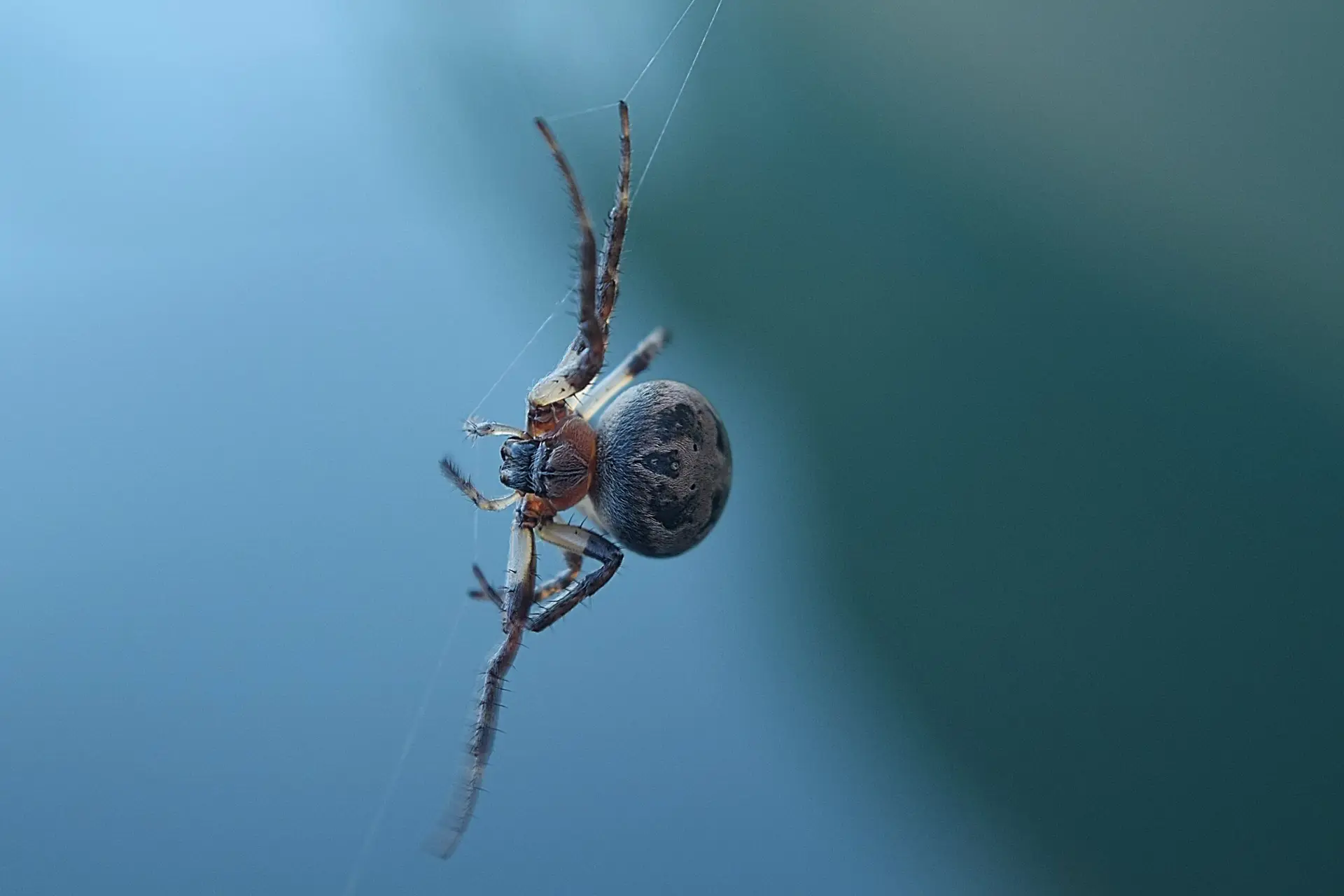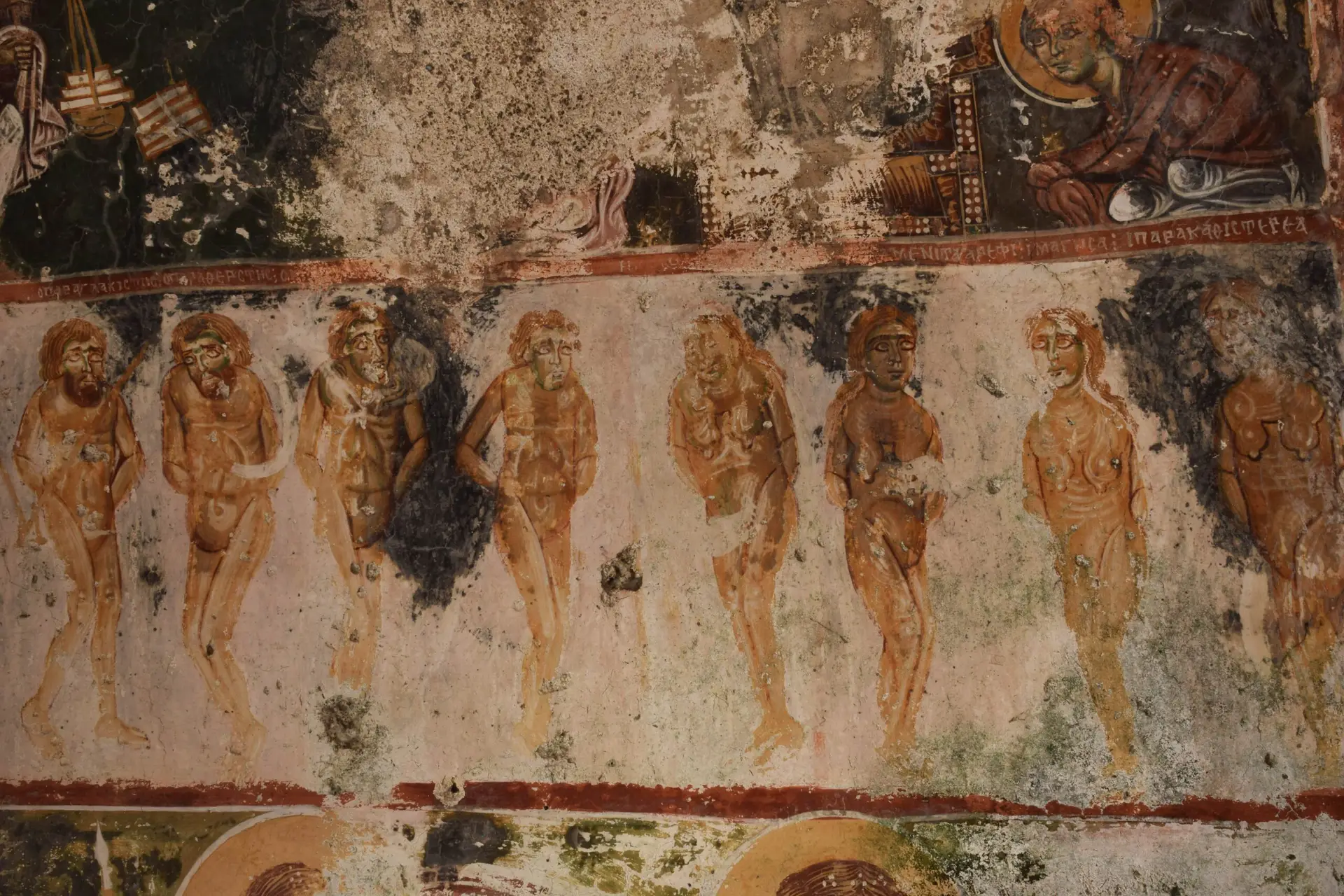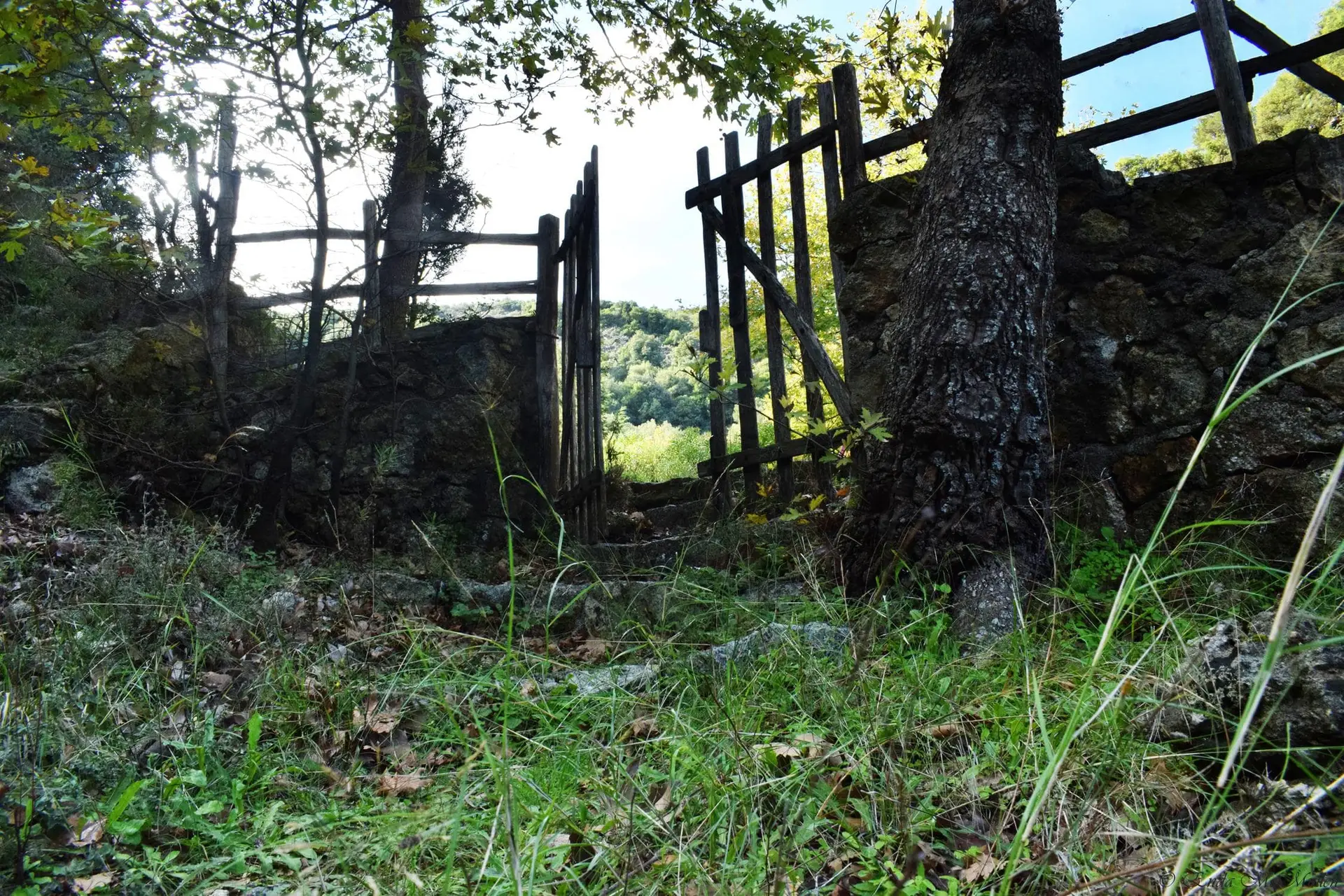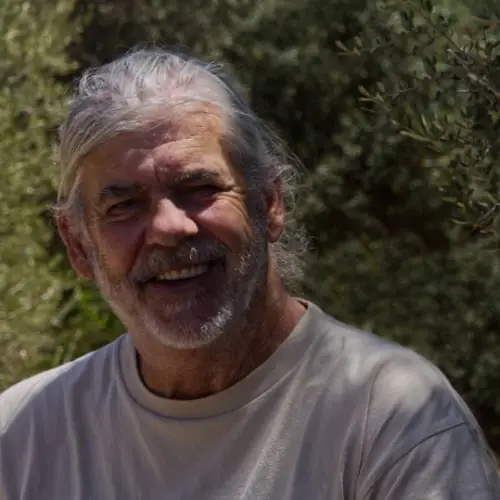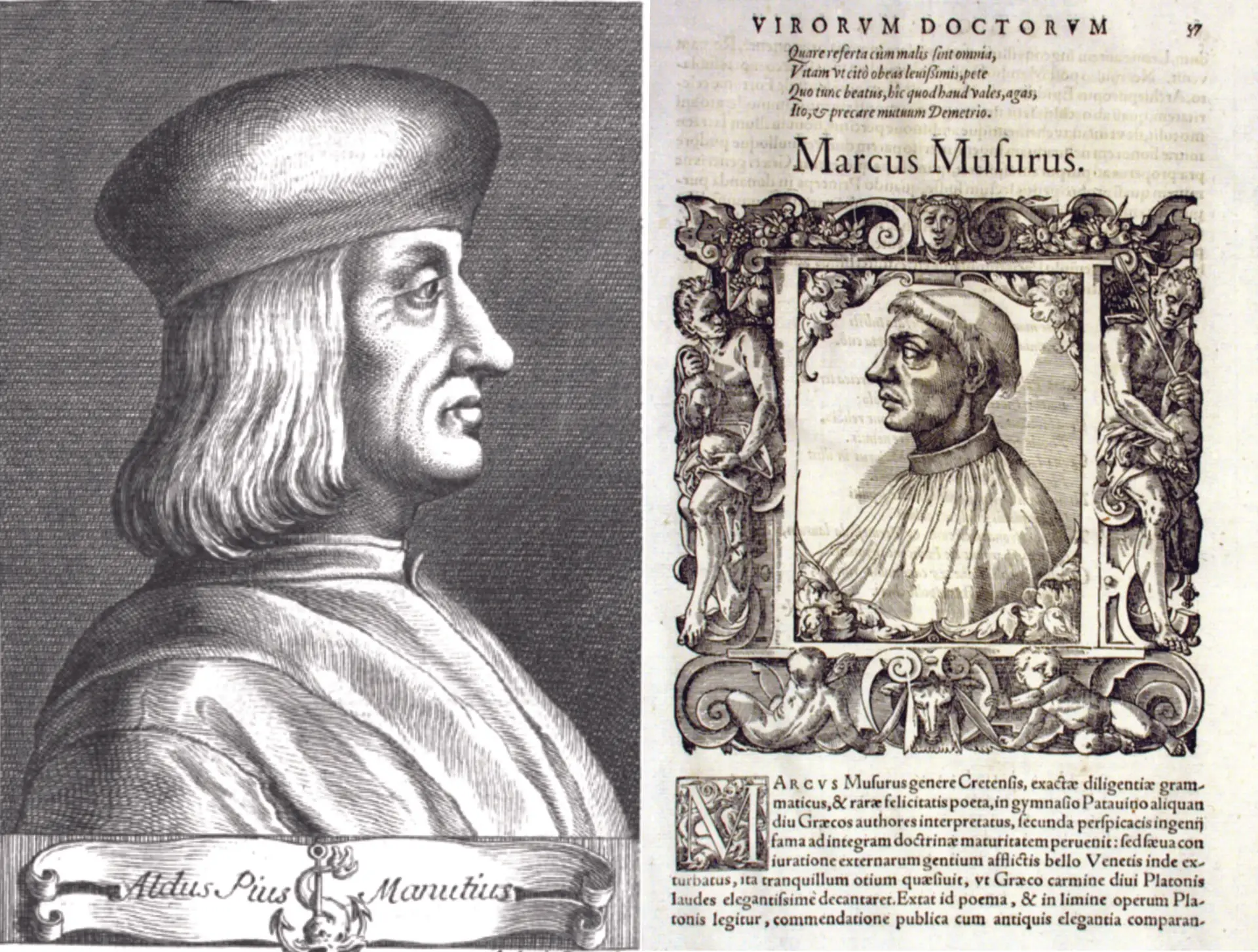Many, many moons ago, long before time was invented, there lived a man named Idmon of Colophon. He was a humble shepherd who walked the land of Lykia (Λυκία) and was known for his ability to dye wool in a beautiful, deep purple colour.
Idmon had a son and a daughter, both of whom walked the land with him and became masters in their own right in dying and processing wool. Closter, his son, often watched his sister spinning wool and realised that if he could make this easier for her, she could then spend more time weaving which is what she really like doing and was very good at. He thought about this for a long time, and eventually, with the help of mother goddess Leto of Phaistos, mother of Apollo and Artemis, he created the spindle to save his sister hours of manually spinning their sheep’s wool into thread which she would then use to weave beautiful material for clothes, blankets and carpets. She was so good in working material and her brother’s invention that she even managed to create wonderfully light material from the stems of flax plant.
The family wandered from city to city in Lykia, and Idmon’s daughter became very well known in the region for her weaving skills and especially her light material which was extremely popular with the royal houses.
Word spread to the mountain nymphs on Mount Tmolus and the water nymphs in the river Pactolus and they all came to watch her weave whenever she was in the area. Once, the queen of the water nymphs remarked that the mortal girl was so good at her craft that it would seem that she was taught by Athena herself.
To this, Idmon’s daughter answered that she taught herself and that she was a much better weaver than Athena. She added that she would be happy to prove this if Athena would care to challenge her to a weaving contest.
Athena heard of this and could of course not let this go unchallenged. It was unheard of that a mortal would challenge a Goddess, so, disguised as an old woman Athena waited for Idmon’s family and herd to pass by, and challenged the girl on her statement.
When Idmon’s daughter repeated her challenge, Athena threw off her disguise and revealed herself in all her glory. Unfazed, the girl repeated her statement a third time and added that she would accept any challenge providing the judge would be Zeus himself. Athena agreed, and both women set to work immediately.
The contest
Athena set out to depict her contest with Poseidon over the ownership of Attica. She wove images of the Twelve Olympians overseeing the contest. The likeness in her work was of such quality that the deities seemed alive. She depicted the spear of Poseidon striking the rock with such clarity that those who saw her work tried to shelter from the water spouting up out of the rock. Her work showed Athena herself plunging her spear into the soft earth and the grey olive tree rising up. The fruits were so well woven that people mistook them for real olives and tried to pick them. Furthermore, as a warning to the mortal girl, Athena added four scenes, one to each corner, showing the price that mortals pay for challenging the Gods. One corner showed King Haemus and Queen Rhodope, once the rules of Trace, now two cold, snow-capped mountains because they dared equate themselves with Zeus and Hera. Another corner showed the fate of Gerana who was transformed into a crane and was made declare war on her own people, the legendary Pygmies (Πυγμαῖοι). The third corner showed Antigone of Troy who was so vain she declared herself more beautiful than Hera. For this, Hera changed her into a stork which applauds itself with flapping wings and talks about itself with a clattering beak.
The last corner showed Cyniras, who betrayed Agamemnon during the battle of Troy, being killed by Apollo as punishment for his betrayal while his 50 daughters where shown throwing themselves into the sea and becoming sea birds.
Athena’s work depicted the power and superiority of the deities and contained many warnings for those who dared challenge this.
Meanwhile, Idmon’s daughter worked her spindle with nimble fingers to create the finest thread ever seen. She used her knowledge of colour and dye to create the most vivid, vibrant colours ever seen. And then her fingers, hands and feet worked her loom so fast and flawless, that the whole scene of her work seemed to appear all at once.
She portrayed Zeus, disguised as a bull, abducting Europa from the African shores. As the scene grew, it was so life like that onlookers attempted to go swimming in the sea she wove. They swore they heard the bull roar and that they saw the sand on the beach blow up when he took off. In her work Idmon’s daughter depicted Zeus in many disguises, now a bull, then a river, now a satyr, and then a ram. She depicted his transformation into a horse while seducing his sister Demeter and his hiding from his wife Hera under the Platanos tree on Crete. The mortal girl depicted the God as a devious creature who had no respect for Gods or Goddesses, demi Gods, man, woman, child or animal. She showed Zeus for the vindictive, cowardly individual he always became when his deviousness and deceptions were found out.

Upon seeing her work, Athena stood and admitted that the mortal girl was indeed much better at her craft than the Goddess herself was and that she should be declared the winner of the contest.
And although he could find no fault in her dazzling work either, and had to admit that it was indeed far superior in craftsmanship than that of his daughter Athena, the way the girl had portrayed him so enraged Zeus that despite Athena’s declaration, he declared Athena the winner of the contest.
“Arachne, daughter of Idmon, you are indeed the best, but know your mistake in challenging the Gods. Therefore, you will live while hanging still.”
This, in turn, enraged the mortal girl so much that she went to the nearest tree, took a strand of the finest purple wool she had ever spun and dyed, and hung herself.
Seeing this, Athena took pity on the girl but Zeus forbade her to bring Idmon’s daughter back to life.
Instead, Athena sprinkled the girls body with a liquid drawn from Hecate’s herbs. As soon as the liquid touched her dead body, the hair fell off, and so did her nostrils and ears. Her head shrank and became very small and she grew many more eyes. Her nimble fingers became many legs. Her whole body shrank until only her belly was left.
And then Athena spoke to her:
“Arachne, daughter of Idmon, you are indeed the best, but know your mistake in challenging the Gods. Therefore, you will live while hanging still. And, from this day on you and all your descendants will spend your lives weaving, as you always did. “
And thus spiders (arachnids) came into being…


